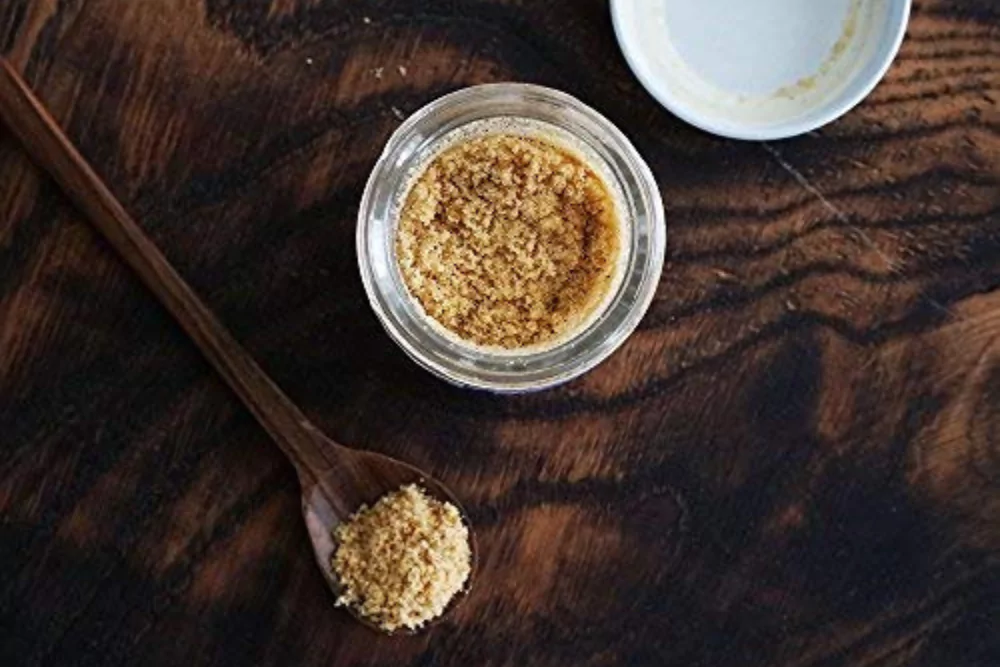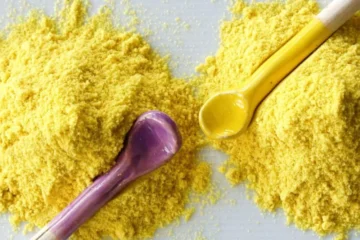What are the health benefits of using asafoetida in cooking?
Short Answer: Asafoetida aids digestion, reduces bloating, and has anti-inflammatory properties.
Long Answer: Asafoetida, commonly known as “Hing,” is packed with numerous health benefits:
- Digestive Aid: Asafoetida helps alleviate digestive issues such as bloating, gas, and indigestion. It stimulates the production of digestive enzymes, making the digestive process smoother.
- Anti-inflammatory Properties: The anti-inflammatory compounds in asafoetida can reduce inflammation and alleviate symptoms of various inflammatory conditions, such as arthritis and irritable bowel syndrome.
- Antioxidant-rich: Asafoetida contains potent antioxidants that protect cells from damage caused by free radicals, supporting overall health and slowing the aging process.
- Respiratory Health: Asafoetida can help relieve respiratory conditions like asthma, bronchitis, and whooping cough by loosening mucus and easing breathing. It can also act as an expectorant, helping to clear the airways.
- Antibacterial and Antiviral: Asafoetida’s natural antibacterial and antiviral properties can enhance immunity and fight infections. It has been used traditionally to combat colds, flu, and other infections.
- Blood Pressure Regulation: Asafoetida may help lower blood pressure by relaxing blood vessels and improving blood flow, which can be beneficial for individuals with hypertension.
How do I make asafoetida butter and oils at home?
Short Answer: Melt butter or oil and mix with powdered asafoetida.
Long Answer: Creating asafoetida butter and oils at home is simple and adds a unique flavor to your dishes:
- Ingredients: You’ll need butter or your choice of cooking oil (such as olive oil, coconut oil, or ghee), and powdered asafoetida (hing). Ensure you use high-quality ingredients for the best results.
- Preparation: Melt the butter or heat the oil in a pan over low heat. Be careful not to overheat or burn the butter or oil, as this can affect the flavor.
- Mixing: Add a small amount of asafoetida powder (approximately 1/4 teaspoon per 100 grams of butter or oil) to the melted butter or oil. Adjust the quantity based on your preference for the strength of the flavor.
- Stirring: Stir well to ensure the asafoetida is evenly distributed throughout the butter or oil. This will help the flavor infuse uniformly.
- Cooling: Allow the mixture to cool to room temperature, then transfer it to a clean, airtight container for storage. Label the container with the date and contents for easy identification.
- Usage: Use the asafoetida butter or oil in your cooking as a seasoning or flavor enhancer. It can be added to dishes at the beginning of cooking to release its aroma or drizzled over finished dishes for a burst of flavor.
Can I use asafoetida butter and oils in all types of cuisine, or are they better suited for specific dishes?
Short Answer: Asafoetida butter and oils are versatile but shine in Indian and Middle Eastern dishes.
Long Answer: Asafoetida butter and oils are highly versatile and can enhance the flavor profile of various cuisines:
- Indian Cuisine: Asafoetida is a staple in Indian cooking, commonly used in curries, dals, and vegetable dishes to add depth and umami. It pairs well with spices like cumin, coriander, and turmeric.
- Middle Eastern Cuisine: Asafoetida is often used in lentil and chickpea dishes, as well as stews and sauces, adding a unique and savory flavor to these recipes.
- Vegetarian Dishes: Asafoetida is ideal for seasoning vegetarian and vegan recipes due to its strong, savory flavor. It can enhance the taste of legumes, grains, and vegetables.
- Sauces and Marinades: Asafoetida butter and oils can be added to sauces and marinades for an extra layer of flavor. They can be used to marinate meats, tofu, or vegetables before grilling or roasting.
- Experimentation: While traditionally used in specific cuisines, don’t hesitate to experiment with asafoetida butter and oils in other dishes to discover new flavor combinations. They can be added to soups, stews, dressings, and even baked goods for a unique twist.
Are there any dietary restrictions or allergies I should be aware of when using asafoetida butter and oils?
Short Answer: Asafoetida is generally safe but may cause allergic reactions in some individuals.
Long Answer: While asafoetida is generally safe, there are a few considerations:
- Allergies: Some individuals may experience allergic reactions, such as skin rashes or respiratory issues, when exposed to asafoetida. If you are allergic to asafoetida, avoid using it and seek alternatives.
- Dietary Restrictions: Asafoetida is gluten-free and suitable for vegetarians and vegans. However, it is essential to check product labels for any potential cross-contamination, especially if you have celiac disease or gluten sensitivity.
- Consultation: If you have a known allergy to asafoetida or related plants, consult with a healthcare provider before using it in your cooking. They can provide personalized advice and recommendations.
- Moderation: Use asafoetida in moderation, as excessive consumption can cause gastrointestinal discomfort, such as bloating or diarrhea. Start with small amounts and adjust according to your tolerance and preference.
- Children and Pregnant Women: While asafoetida is generally safe for adults, it is advisable to consult with a healthcare provider before introducing it to children’s diets or using it during pregnancy.
How long can I store homemade asafoetida butter and oils, and what’s the best way to preserve them?
Short Answer: Store asafoetida butter and oils in airtight containers for up to 3 months.
Long Answer: Proper storage is essential to maintain the freshness and quality of your homemade asafoetida butter and oils:
- Containers: Use clean, airtight containers to store the butter and oils, preventing exposure to air and moisture.
- Refrigeration: Store the containers in the refrigerator to extend their shelf life.
- Shelf Life: Homemade asafoetida butter and oils can be stored for up to 3 months when properly refrigerated.
- Check Freshness: Always check for any signs of spoilage, such as off odors or changes in texture, before using the stored butter or oils.
Conclusion
Asafoetida butter and oils offer a unique and flavorful way to enhance your cooking. By understanding their health benefits, how to make them at home, and their versatile applications, you can elevate your dishes to new heights. Remember to consider dietary restrictions and proper storage to enjoy these aromatic ingredients to the fullest.





